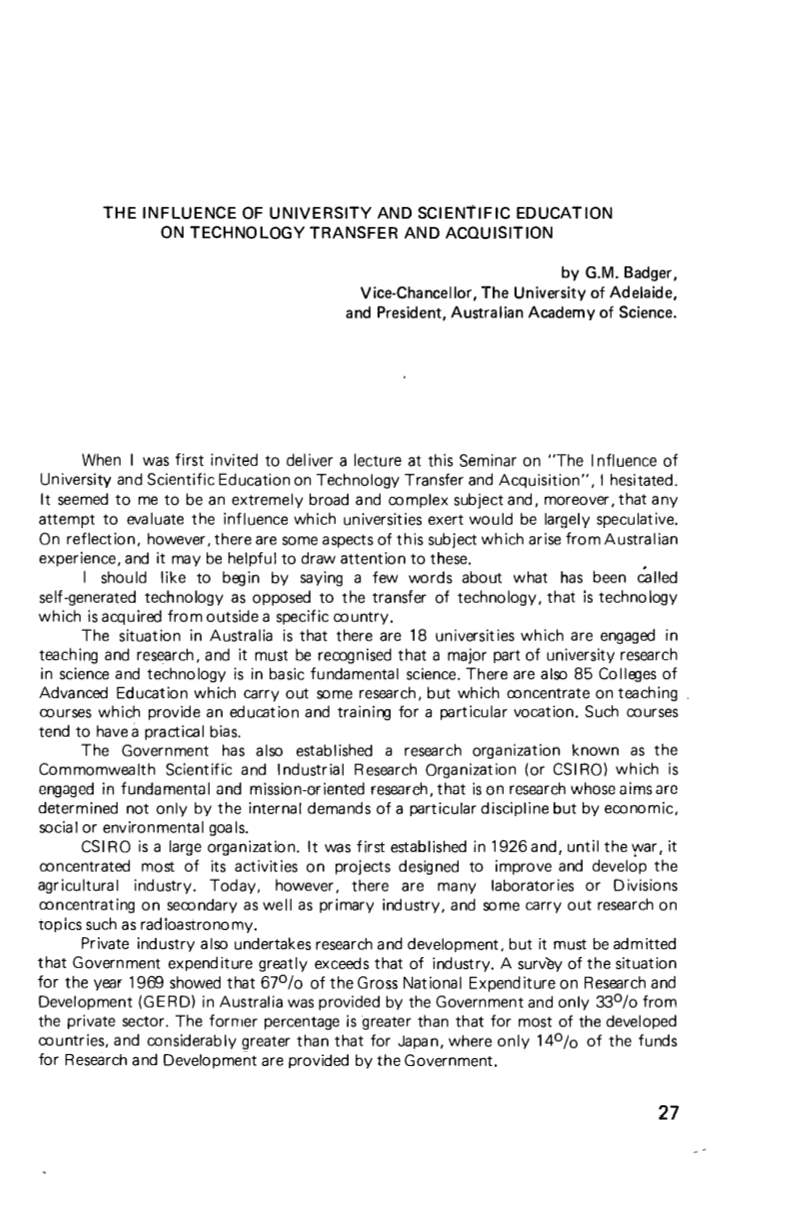
THE INFLUENCE OF UNIVERSITY ANO SCIEN1IFIC EOUCATION
ON TECHNOLOGY TRANSFER ANO ACQUISITION
by G.M. Badger,
Vice·Chancellor, The University of Adelaide,
and President, Australian Academy of Science.
When I was first invited to deliver a lecture at this Seminar on "The Influence of
Un iversity and Scientific Education on Technology Transfer and Acquisition", I hesitated.
It seemed to me to be an extremely broad and complex subject and, moreover, that any
attempt to evaluate the influence which universities exert would be largely speculative.
On reflection, however, there are some aspects of th is subject wh ich arise from Austral ian
experience, and it may be helpful to draw attention to these.
I should like to begin by saving a few words about what has been called
self-generated technology as opposed to the transfer of technology, that is technology
which is acquired from outside a specific country.
The situation in Australia is that there are
18
universities which are engaged in
teaching and research, and it must be recognised that a major part of university research
in science and technology is in basic fundamental science. There are also 85 Colleges of
Advanced Education which carry out some research, but which concentrate on teaching
courses which provide an education and training for a particular vocation. Such courses
tend to have a practical bias.
The Government has also established a research organization known as the
Commomwealth Scientific and Industrial Research Organization (or CSIRO) which is
engaged in fundamental and mission-oriented research, that is on research whose aims are
determined not only by the interna I demands of a particular discipline but by economic,
social or environmental goals.
CSI RO is a large organization. It was first established in
1926
and, until the yvar, it
concentrated most of its activities on projects designed to improve and develop the
agricultural industry. Today, however, there are many laboratories or Divisions
concentrating on secondary as well as primary industry, and some carry out research on
topics such as rad ioa strono my.
Private industry also undertakes research and development, but it must be admitted
that Government expenditure greatly exceeds that of industry. A survey of the situation
for the year
1969
showed that 67
0 /0
of the Gross National Expend iture on Research and
Development (GERD) in Australia was provided by the Government and only 33
0 /0
from
the private sector. The forrner percentage isgreater than that for most of the developed
countries, and considerably greater than that for Japan, where only
14
0 /0
of the funds
for Research and Development are provided by the Government.
27


